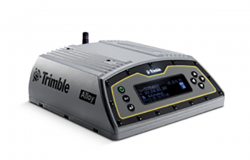At least three commercial organizations have initiated testing of the Galileo Open Service Navigation Message Authentication (OSNMA) service, concurrently with the European GNSS Agency (GSA) and the European Space Agency (ESA) themselves. Results to date show success. OSNMA offers end-to-end authentication on a civilian signal, protecting receivers from spoofing attacks. OSNMA is pioneered by the Galileo Program.
Galileo OSNMA is an authentication mechanism that allows GNSS receivers to verify the authenticity of the information transmitted by the satellite itself making sure that the data they receive are indeed from Galileo and have not been modified in any way. OSNMA is a novel and unique service provided free-of-charge to all users, contributing to increase the overall security of GNSS-based applications and services.
Septentrio announced that its receiver has successfully authenticated navigation data of the first OSNMA encrypted GNSS satellite signal. Septentrio has provided a testbed for this technology from the end-user point of view. The anti-spoofing capabilities of OSNMA will complement Septentrio’s already available anti-jamming technology, AIM+, and further strengthen the overall security of Septentrio GNSS receivers.
Qascom and the PATROL project team also announced the successful testing of Galileo OSNMA using a mass-market receiver, during the ongoing signal-in- space testing phase in view of the “Public observation” phase.
The PATROL project is funded under the European Union Fundamental Elements programme, a research and development (R&D) mechanism supporting the development of chipsets and receivers. The project started on Q1/2018 with the objective to develop a fully OSNMA-enabled close-to-market solution for smart tachograph applications (based on Teseo V receiver by ST Microelectronics).
“In PATROL we have demonstrated the ability to efficiently implement OSNMA on a modern and compact receiver design for automotive and mass-market” says Fabio Pisoni, GNSS System R&D at STMicroelectronics
PATROL User terminal, compliant with the new smart tachograph’s regulations, demonstrates the benefit provided by OSNMA in a modern application requiring a trusted position information. The demand for safety and security is constantly increasing in the GNSS applications for the automotive market, according to Alexandre Allien (CTO at FDC), and the smart-tachograph market is confirmed as a concentrate of cutting- edge technologies and innovation, pioneering the use of OSNMA.
The PATROL project is coordinated by Qascom, with FDC as consortium partner and subcontractors STMicroelectronics, GMV Aerospace and Defence, Actia and the University of Padova. PATROL is funded by the European GNSS Agency (GSA) through the Fundamental Elements programme, under procurement No GSA/OP/23/16.
In the last 15 years Qascom has contributed to the design of GNSS authentication schemes, including OSNMA, in collaboration with space agencies and industries. In the context of PATROL project, Qascom tested the first mass-market implementation of OSNMA.
Finally, eleOrbit GmbH of Nuremberg, Germany, announced that it has implemented testing capability for Galileo’s Open Service Navigation Message Authentication (OSNMA) aboard the company’s GNSS Receiver with Open Software Interface (GOOSE).






